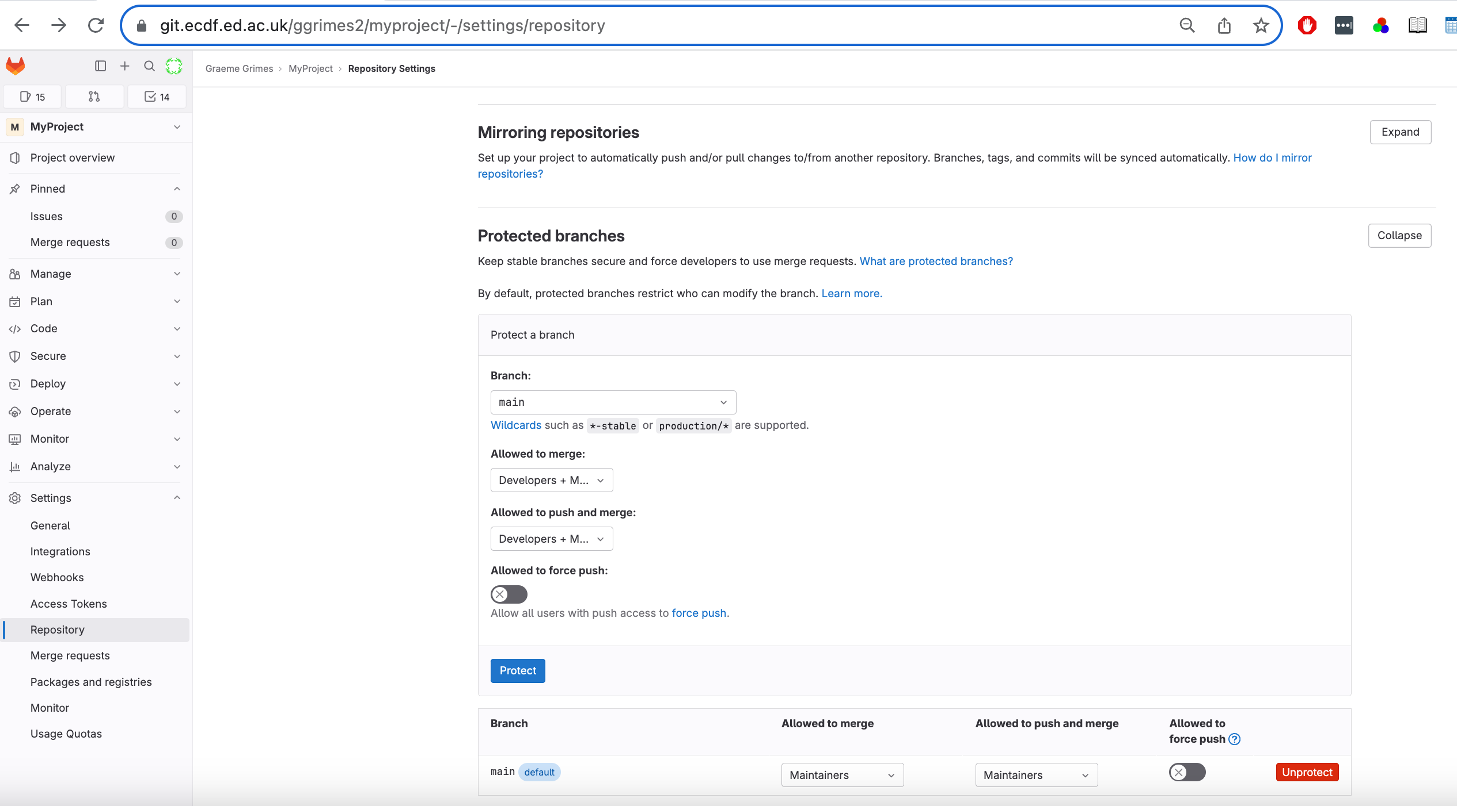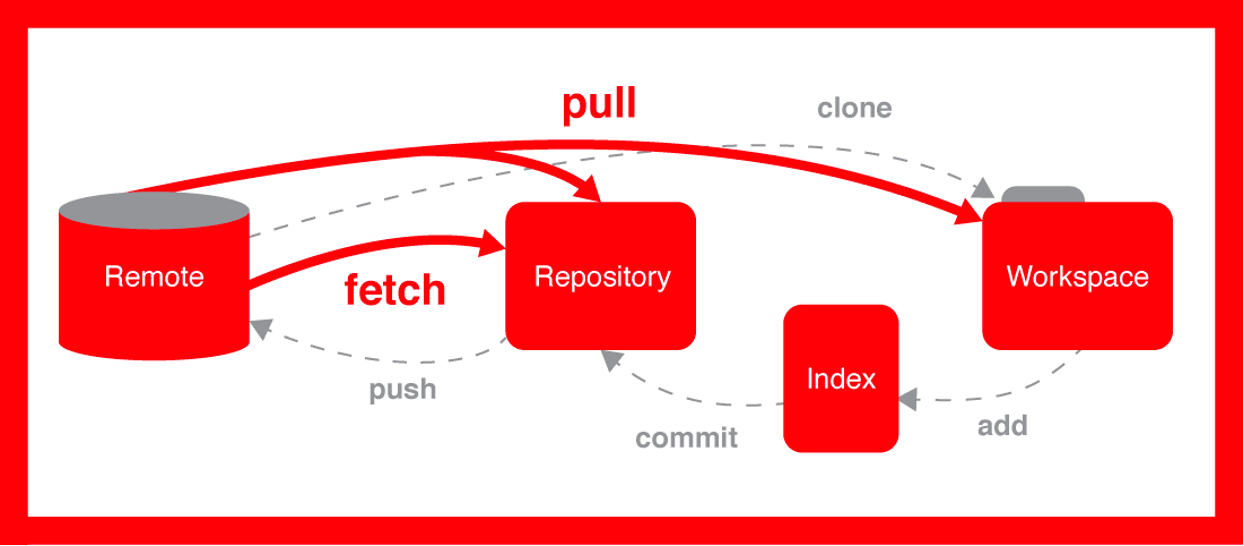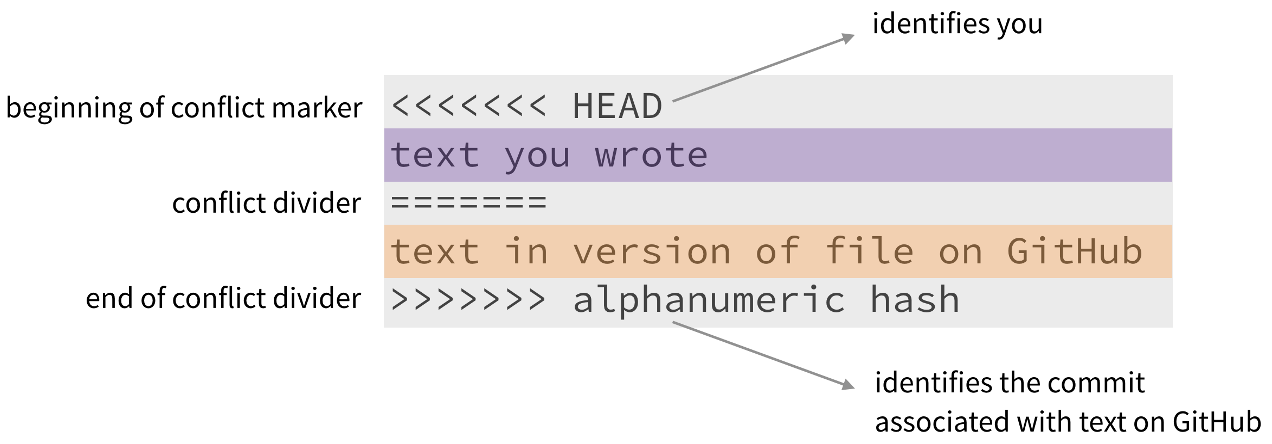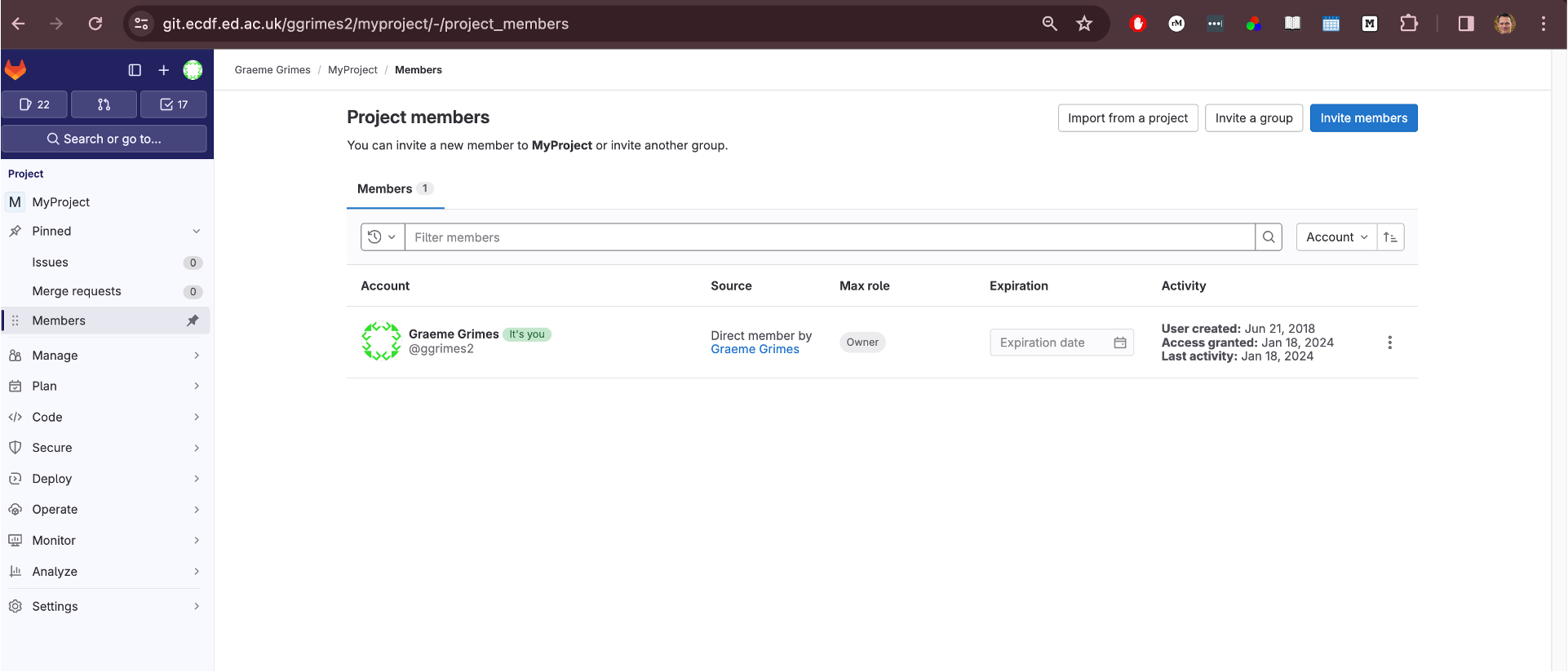Collaborating
Last updated on 2025-07-01 | Edit this page
Overview
Questions
- How do I collaborate with others using Git?
- What different models exist for Git collaboration?
- What are protected branches, and how do I handle merge conflicts?
Objectives
- Describe multiple models of collaboration using Git
- Demonstrate how to add collaborators and manage permissions in GitLab
- Practice cloning, committing, and pushing to a shared repository
- Understand how to resolve common issues like push rejections and merge conflicts
Collaborating with Git
One of Git’s most powerful features is that it makes collaboration
straightforward and trackable. When working with others, a shared
repository acts as the single source of truth. Contributors clone,
modify, and then sync their work using version control commands like
pull, commit, and push.
Different Models for Collaboration
There are several ways to collaborate using Git:
Shared repository model: You give collaborators direct access to your repository. This is quick but requires trust.
Fork-and-pull model: A collaborator creates a copy (fork) of your repository, makes changes, and submits a merge request (also called a pull request). This is commonly used in open-source projects. It may not work between two private repositories.
For this exercise, we assume a shared repository trust model. That means you’ll work directly in each other’s repositories.
We’ll now walk through the process of adding a collaborator and working on the same project together.
Step 1: Pair Up and Add a Collaborator
You will work in pairs. First:
- Introduce yourselves.
- Person 1: Get the UUN (University User Name) of Person 2.
Step 2: Unprotect the Branch
In GitLab, branches can be protected to restrict who can push to them. To allow collaborators to push changes, you need to modify this setting:
- Go to
Settings -> Repository -> Protected Branches. - Find the
mainbranch (ormasterdepending on your setup). - Click Unprotect.

Step 3: Clone the Repository
What if you were given a link to a folder from a remote location that
you needed to get on your computer? How would you do that? You’d need to
make a copy of the remote repository to your local machine. In the world
of Git, this is referred to as “cloning.” The command for cloning is,
you guessed it, git clone.
Person 2 now clones the repository on their system (e.g., on Eddie):
BASH
git clone https://git.ecdf.ed.ac.uk/<person1>/myproject.git project-collab
cd project-collab
git remote -vThis creates a local copy of the repository and shows the remote repository settings.

Step 4: Check Who Edited What
Git provides the blame command to show who last modified
each line of a file:
This is useful when debugging or understanding the origin of changes.
Step 5: Make a Change and Commit
Person 2 can now make a change to the
README.md file:
After saving the file:
Step 6: Push the Changes
Now attempt to push:
Merge Conflicts
Sometimes two collaborators edit the same part of a file. This creates a merge conflict.
Git will mark the conflict like this:

You must manually edit the file to resolve the conflict, then:
This caches your credentials for one hour.
Key Points
- Git allows multiple collaboration models; shared access is fastest but requires trust.
- GitLab permissions and protected branches must be configured for collaborators.
- Always pull before pushing to avoid rejection.
- Merge conflicts are normal and can be resolved with manual editing.


